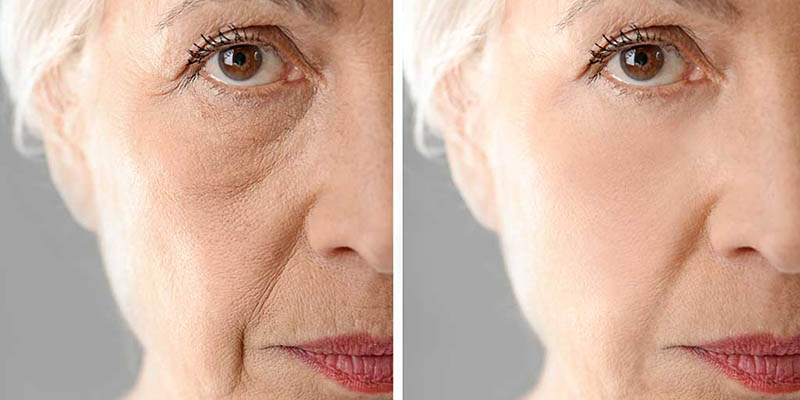Anti-aging, Skincare
Skin Laxity: What Causes It? How Can We Treat It?
Skin Laxity. What Causes It? How Can We Treat It?
Do you have concerns of loose, crepe-like skin on your face and body?
This is known as skin laxity and, due to the aging process, is something everyone will face at some point in life. Besides aging, there are other factors that can play a part in skin laxity.
These factors are genetics, diet, lifestyle, sun exposure, exercise, stress alcohol, drugs and smoking.
But even if you’re mindful of all the above, it isn’t enough to prevent laxity in the skin.
There are two vital components which influence skin laxity and those are: collagen and elastin.
What is elastin?
Elastin is a protein that acts like a spring within the elastic fibres of connective tissue. Lack of it in the skin, therefore leads to less elasticity.
What is collagen?
Collagen is the main structural protein found in the skin and other connective tissues throughout the body. Think of collagen as the “building blocks” of the skin.
Collagen and elastin are found in the deeper layer of your skin, the dermis, located just above the fatty layer. The skin depends on both collagen and elastin to remain tight to your face and body.
Although, the natural aging of the skin can be accelerated by our lifestyle, we simply stop producing collagen and elastin as we age.
At age 20, your body begins to produce 1% less collagen per year and the skin becomes more fragile, thins and begins to sag.
Environmental Factors & Skin Laxity
In our day to day lives, we are exposed to high levels of environmental factors, such as toxins, pollutants, free radicals and UV rays, which damage ;your skin.
Antioxidants are key to preventing free radical damage so incorporating them into your diet and skin care regimen is essential. A few key antioxidants are vitamin E, vitamin C, vitamin A (retinol) and green tea.
Incorporating these antioxidants into your diet and skin care regimen is a great way to reduce the visible signs of aging.
Equally, protecting your skin from UV rays is a must. Sun exposure accounts for about 85% of skin aging.
It leads to the appearance of freckles, sun spots, dryness, fine lines & wrinkles, excessive loss of collagen and elastin, formation of precancerous lesions as well as skin cancer.
The best thing you can do for your skin is wear a sunscreen with a SPF of 30 or higher every single day!
What Treatments Improve Skin Laxity?
Are loose skin, fine lines/wrinkles, or even cellulite are a concern of yours?
There are advanced technology treatments available to rebuild collagen in the skin to reverse skin laxity..
A wonderful treatment used to tighten lax skin not only on your face, but on your body as well, is Microneedling (no injections involved!)
The treatment kick-starts your body to produce collagen and elastin again. Plus it improves the absorption of products designed to lift and tighten your skin. It’s a safe and comfortable treatment, with little downtime.
Microneedling helps you achieve a more youthful appearance. A series of 4 treatments are recommended every 4-6 weeks. After your initial 4 treatments, a maintenance treatment will typically be needed about 10-12 months later.
Whilst Microneedling is a great treatment. some clients just prefer quicker results.
For speed, there’s nothing like a non-surgical facelift using Dermal Fillers.
Other excellent results can be achieved using Skin Boosting Therapy.
Filler is used to give a subtle lift the face, thus reducing the appearance of laxity … and helping you look and feel more youthful.
Looking after your skin is a sure-fire way to keep people guessing about your age. So Contact Aesthetics Julie Edwards now to make your appointment or to arrange a Free Skin Consultation.
Here at Aesthetics Julie Edwards, we offer the latest Aesthetics and Advanced Beauty Treatments to help you stay younger for longer. Contact Aesthetics Julie Edwards if you’d like more information about what we can do for you.

